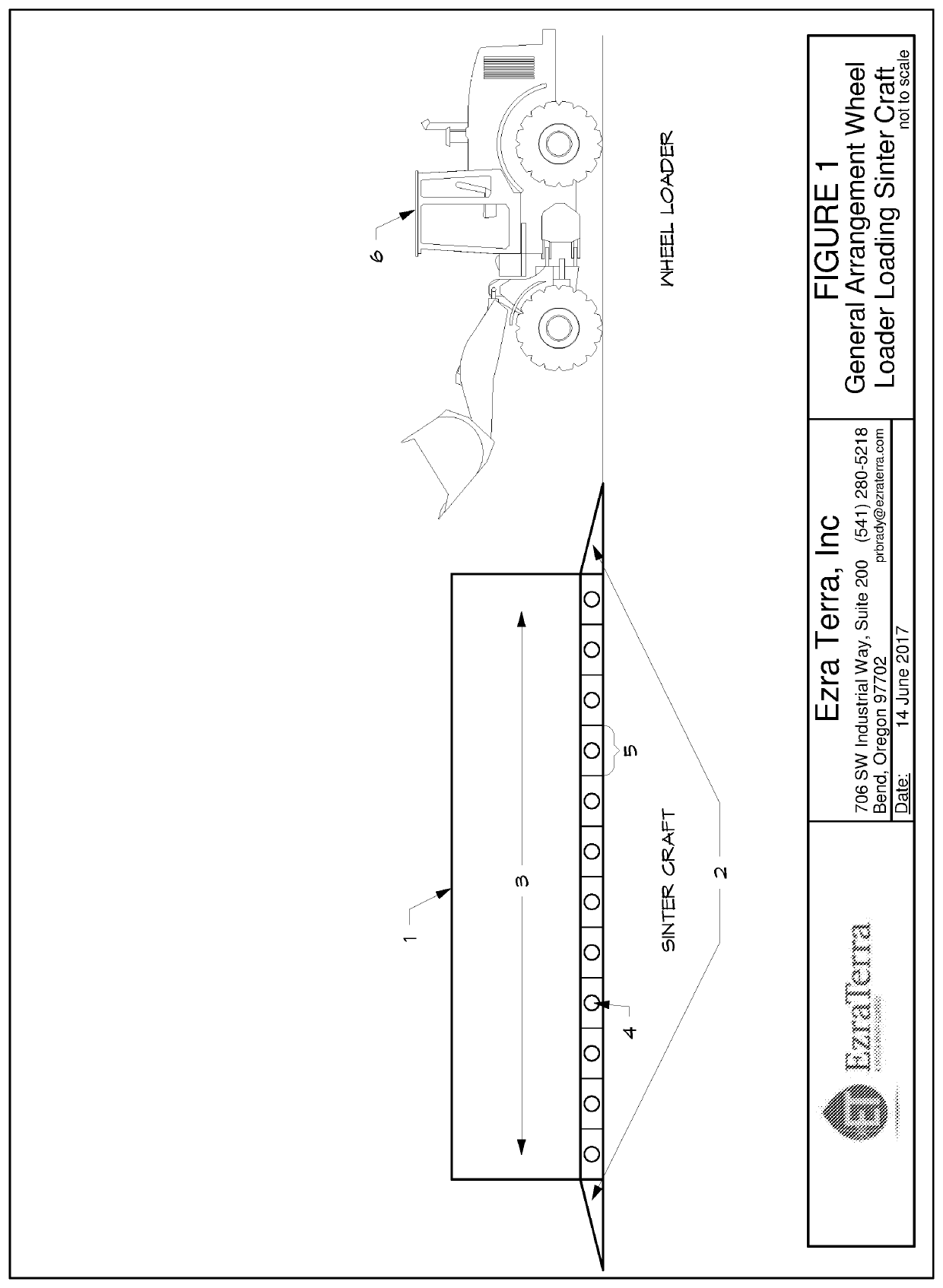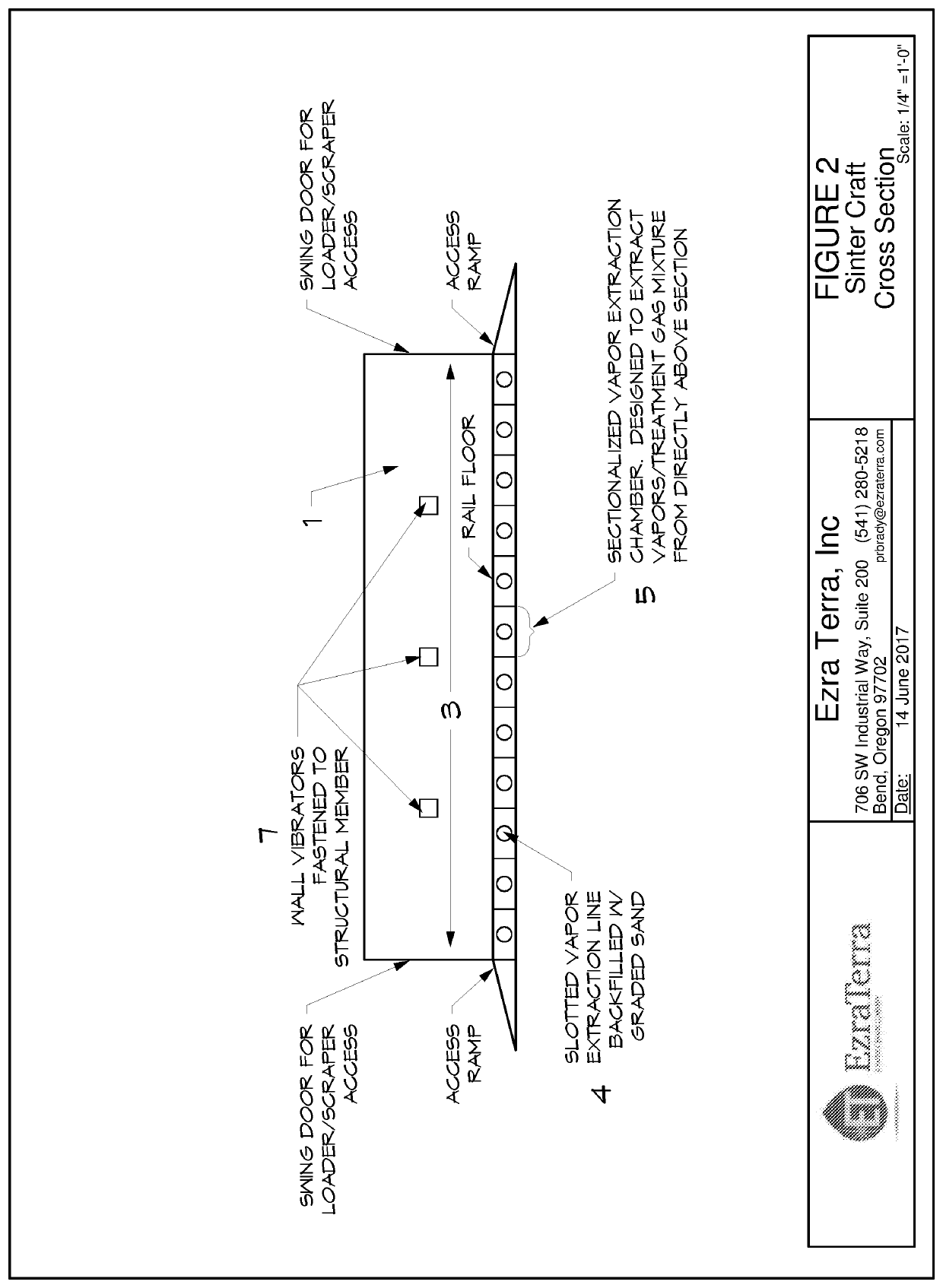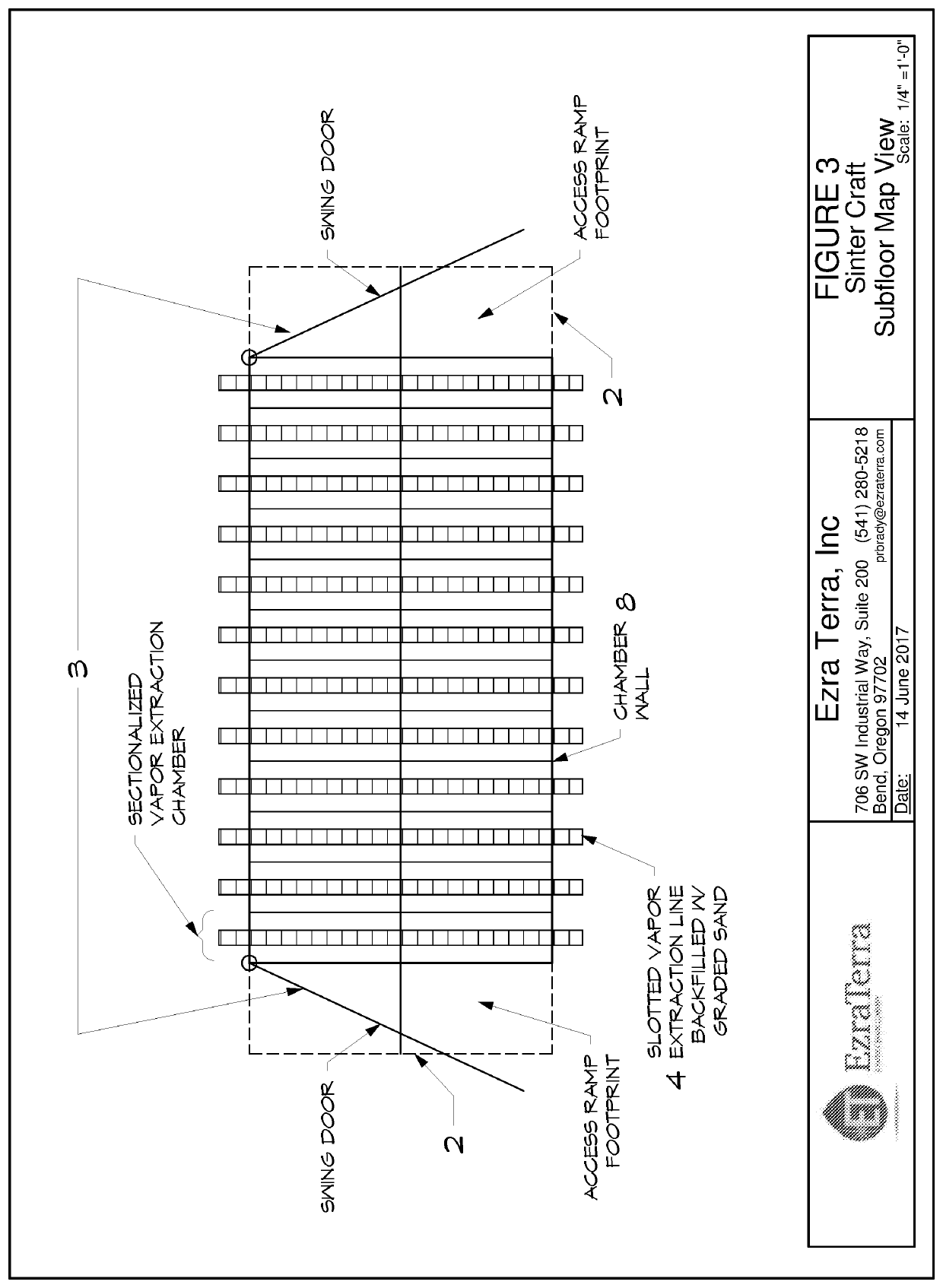Sintered Wave Porous Media Treatment and Apparatus and Process is disclosed, which uses an automated static enclosed arrangement to efficiently remove water, organic contaminants (
petroleum, solvents, pcbs, pesticides) and per- and polyfluoroalkyl substances (PFAS) and fluorinated related compounds from large volumes of porous media such as a mixture of soil, gravel, rocks, sediments or other porous media. The Sintered Wave technology is a multipurpose treatment device that uses a Sinter Craft as a treatment vessel that allows earth moving machines to easily enter and exit during loading / unloading. The soil is then conditioned to accommodate treatment by
sintering (densifying) by vibrating the soil
bed, which removes soil vapor and fluids. The soil
bed is then shaped by placing hexagonal holes or slots containing 120 degree angles from top to the bottom of the soil
bed. The sintered and shaped soil bed is treated in a sequential manner (small sections at a time) with a
narrow band of
high velocity hot or
cold air, which is conveyed from the top of the bed to the bottom (or the bottom to the top) through the shapes placed in the soil bed; hot or
cold air moves through the soil bed in open channels rather than pulled through the porous media itself. Vapor extraction lines situated below (or above) the soil bed extracts vapors from narrow sections in a sequential manner in concert with the
narrow band of
high velocity hot or
cold air. In order to remove
high concentration hydrocarbons, small sections of the bed are treated by passing an
inert (less than 10%
oxygen)
narrow band of
high velocity hot air (
inert wave), followed by a period of no
active treatment (soak zone), then followed by an ambient (21%
oxygen) narrow band of high velocity hot air (ambient wave). The space between the
inert wave and ambient wave takes
advantage of the poor
thermal conductivity of soils by allowing the soil to remain at temperature without the addition of additional energy (soak zone). The heat sources are flameless electric heaters that produce a
maximum temperature of 1,200 F that do not produce oxides of
Nitrogen or Oxides of
Sulfur. The dense static condition of the soil bed prevents the formation of particulate matter (PM) in emissions. The vapor conveyance and off-gas
treatment system are sized to the small
active treatment zone rather than the entire soil bed, which saves costs. The Sintered Wave technology uses a self-diagnostic regenerative wave
system in high
hydrocarbon concentration situations to automatically retreat areas of concern when
carbon monoxide,
acetone and methylethylketone are detected at certain proportions. The
system relies on enhanced capillary flow as the modality of water and contaminant transport. The
system also allows for a means to rapidly cool soils to prevent the formation of thermal degradation by products such as
acetone and methylethylketone (simple alcohols) in high organic soils. In order to nondestructively remove PFAS and related fluorinated compounds such as
Perfluorooctane Sulfonate and Perfluoroctanic Acid (PFOS / PFOA) the same sequence is performed as above except the initial wave consists of a narrow band of high velocity hot
ambient air (21%
oxygen) followed by a soak zone with the final wave consisting of a narrow band of high velocity ambient unheated air. The final ambient unheated air wave is a
polishing step to remove residual contaminants, which reduces the temperature of the soil in an effort to capitalize on the low temperature
Cristobalite quartz inversion sudden volumetric change.
Cristobalite is present in most clay soils.
Cristobalite inversion occurs in a narrow temperature range from 365 F to 419 F where a sudden
volume reduction of 0.8% as the temperature increases from ambient conditions. PFOS / PFOA boiling ranges are just below the Cristobalite inversion temperature. The volumetric change is reversable upon cooling where there is a sudden volumetric increase squeezing out vapors from the soil matrix. The system relies on enhanced capillary flow as the modality of water and contaminant transport. Capillary flow has the capacity to cause high vacuum pressures within the pore throats when the porous media is saturated or near saturated conditions. The surfactant nature of PFAS lowers the
surface tension of water, which in accordance with the Law of Laplace equalizes the pressure in a variety of pore
throat diameters with the soil bed. This invention uses a special cooling and treatment
gas conditioning system to nondestructively remove PFAS from the vapor
stream. This vapor
handling system can be used in conjunction with commercially available vapor treatment systems that allow simultaneous treatment of
hydrocarbon and PFAS
contaminated soils. Contaminated vapors exit the Sinter Craft where they are cooled with a direct spray of water into the vapor
stream. PFAS will selectively condense in the cooling water. The water mist laden air moves through a tank equipped with baffles to knock out the majority of the mist. A
demister screen
tower removes any residual water mists. The cooling water is recirculated within the system. The warming of the water prevents any significant water condensation from the vapor
stream because the vapor stream is always above ambient temperatures. A
vapor phase activated carbon vessel is used to remove any residual contaminants from the vapor stream prior to
discharge to the
atmosphere. The cooling water can be analyzed to determine PFAS concentration from a give batch of soil. The cooling water is then treated through aqueous
granular activated carbon.
 Login to View More
Login to View More  Login to View More
Login to View More 


